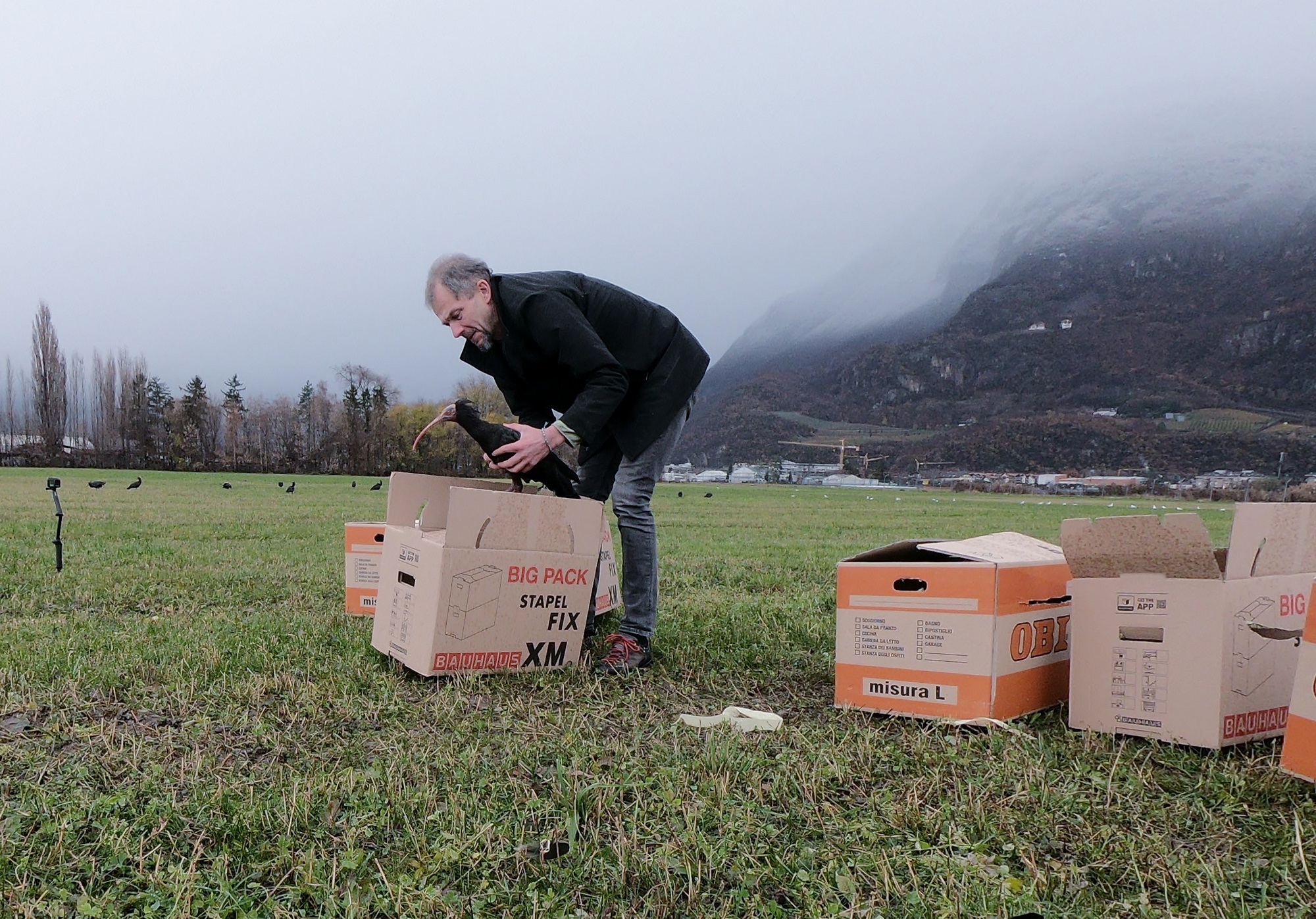Northern Bald Ibises in moving boxes
Newsletter 01/12/2021
After the Überlingen ibises continued to stay in their breeding area and made no attempt to fly south, we decided to transfer the birds to South Tyrol.
On November 27th, Anne-Gabriela Schmalstieg captured the first 18 birds on a sports field near Frickingen. On November 28th, they were individually "packed" in moving boxes and transferred by car over the Resia Pass to Bolzano, where they were released in the afternoon.
Especially the still young Überlingen colony is closely observed by many friends of the Waldrappteam and journalists. Two film crews were present at the capture. The transfer in the moving boxes caused a lot of media and public attention (BR; BILD).
This media presence gives us the opportunity to put the situation and our measures into the right context and thus also to draw attention to an increasing threat to the Northern Bald Ibis and many other migratory bird species.
In Überlingen, it is impressively evident that the effects of climate change are already directly and manifold present. The increasing variability of weather conditions in autumn and early winter makes it increasingly difficult for migratory birds to get their timing right. Many species, including the Northern Bald Ibis, synchronise the start and course of autumn migration with environmental parameters, and these parameters are becoming increasingly unreliable. As a result, the onset of autumn migration for many species is becoming more variable and increasingly delayed, with the risk of ultimately being prevented from progressing by the onset of winter.
Just a few days ago, a single ibis migrated south from eastern Switzerland, at the same time as three birds from Carinthia. According to this, the migration motivation of the ibises has not yet waned. After all, we were glad that the Überlingen ibises did not fly off, because the crossing of the deep-winter in the Central Alps is probably no longer possible for them this season and an attempt could have led to considerable losses. However, we assumed from experience that the birds would still show the necessary migratory motivation when transferred to a location south of the main Alpine ridge in order to migrate further south quickly.
And apparently we were right about that, because the majority of the birds released in Bolzano have already flown over the Po Valley and have reached Tuscany. Whether and how many birds are still on site in Bolzano cannot be accurately estimated at the moment, because the solar tracker has temporarily failed on the majority of the birds due to lack of sunlight.
The remaining 12 birds are to be caught this week by Corinna Esterer and also transferred to Bolzano. This will also mark the end of the season in Überlingen. And we are ready for the coming season, we assume an independent return of the ibises to Überlingen and also hope for a regular start for the next autumn migration.
Basically, however, we have to be prepared for the fact that the migratory behaviour of the ibises, like that of many other migratory bird species, is becoming increasingly variable, with all the associated risks. In a still young colony like Überlingen, it is justified to intervene in such cases in order to prevent losses wherever possible. In a few years, however, the Überlingen colony itself will have to cope in such cases and we are confident that this will then be the case. Northern Bald Ibises prove to be survival artists time and again, and modelling also provides positive forecasts for this ibis population despite increasing risks due to climate change.

Photo: Release of the 18 Waldrapps in Bolzano, South Tyrol.




